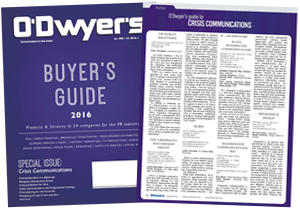|
|
When a corporate crisis occurs, should a company respond on social media or remain silent? As is often the case in complex situations, the answer usually lies somewhere in between.
If a company monitors diligently for online conversation, it has an opportunity to respond quickly and contain potential issues before they expand. Sometimes, however, the right strategy is to ignore the chatter until it dies down. In such cases, responding can actually expand the reach of a crisis unnecessarily.
Below are two very different examples of social media responses to recent crises, and the lessons one can learn. Each strategy arrives with a level of risk, of course, so deciding how to approach a situation always requires careful consideration.
|
|
To respond on social: REI
Strategy overview: Sporting goods company REI received negative attention after a social media crisis in November 2015. Because the crisis occurred on social media, REI responded on social media. This strategy was successful: REI was able to contain the negative conversation within only the affected community.
The crisis: In November 2015, REI announced that it would close on Black Friday to encourage customers to “Opt Outside” (presumably, engaging in sporting events). Then REI CEO Jerry Stritzke held a question and answer session on social media discussion forum Reddit. The company’s “Opt Outside” campaign otherwise had been received favorably, so it likely anticipated the Q&A would have the same reception. It did not. In fact, the forum opened floodgates of criticism from REI employees. They complained that their success at the company was too dependent upon membership sales. A conversation that previously had been taking place behind closed doors was made public for all to see. The number of negative comments grew dramatically: from 300 to over 5,000. After the session ended, Stritzke posted a response on Reddit, the same forum in which the conversation took place. An excerpt of his post follows: “… I want you to know we’re committed to this community and to being honest about REI. I see a lot of value in hearing from our employees and members in a candid and anonymous setting like this. Thank you for the good conversation and holding us accountable.”
This conversation spilled over onto REI’s Facebook page, where more comments collected. REI’s Facebook team responded in real time, pointing users to Stritzke’s response, and thanking them for their feedback. Again, REI maintained its strategy of responding to the issue in the same channel where it originated.
Lessons learned from REI: Because REI’s crisis occurred on Reddit, the company responded there. When the conversation expanded to Facebook, REI also responded on this forum. By closely watching the level of discussion and continuing its normal course social strategy on other channels, REI did not communicate about the matter more broadly. Although the crisis certainly did spark mentions on several online news sites, overall, conversation about REI did not increase for long. Its strategy of containing the relevant conversation to the channels where it originated appears to have paid off.
Not to respond on social: GE
Strategy overview: GE dealt with a recent crisis without acknowledging it on social media. Instead, during the days that followed the crisis, GE paused its own social media activity. The strategy proved to be advantageous. The media cycle was short, and talk of the crisis on social media was limited.
The crisis: In April 2015, a fire destroyed six acres of GE’s Appliance Park manufacturing facility in Louisville, Kentucky. An investigation followed. When findings were released at the end of July, it became clear that GE’s outdated sprinklers and broken hydrants may have caused some of the damage.
In the days following the crisis, GE stopped posting its usual amount of social media content. After discussion related to the fire died down online, GE resumed posting normal course content. Its large suite of content helped steer discussion about the company back on track with little more than a brief pause. GE maintains a massive online presence, churning out positive articles, websites, and social media posts which dilute any negative discussion and dominate search results.
Lessons learned from GE: By watching the conversation and responding on a reactionary basis, GE was able to discern that it was not necessary to address the fire through its social platforms. Instead, it was able to limit the damage and exposure of bad news. It accomplished this even though it stopped posting on social media in the days following the crisis due to its strong, long-term digital presence. While it is always necessary to communicate news of a crisis with affected and relevant groups, the means to do so must be carefully thought through. Corporate social media handles may not be the best means to communicate unless warranted by conversation happening there.
Key takeaways
Although GE and REI handled their respective crises differently, several principles were present in both companies’ responses.
First, monitor social media at all times. In a crisis, judge response strategy based upon the location and level of conversation.
Second, like any crisis, attempt to contain conversation within the affected communities. Respond to social media chatter on the same platform or channel in which it originated.
Finally, a strong digital footprint, including a long-term presence on social media channels, can prevent negative discussion from dominating online.
By formulating a strategy built upon these principles, companies can successfully navigate social media in a crisis.
* * *
Kayla Hamberg is a Senior Associate in Sard Verbinnen & Co’s Digital Communications Group.




 There’s a fine line between newsjacking and taking advantage, aka ambulance chasing. Our job as PR professionals is to tread it carefully.
There’s a fine line between newsjacking and taking advantage, aka ambulance chasing. Our job as PR professionals is to tread it carefully. PR firms need to be mindful of ways their work product may be protected by the attorney-client privilege whenever working with a client’s internal legal team or its external legal counsel.
PR firms need to be mindful of ways their work product may be protected by the attorney-client privilege whenever working with a client’s internal legal team or its external legal counsel. Manuel Rocha, former US ambassador and intenational business advisor to LLYC, plans to plead guilty to charges that he was a secret agent for Cuba.
Manuel Rocha, former US ambassador and intenational business advisor to LLYC, plans to plead guilty to charges that he was a secret agent for Cuba. CEO mentoring is an often-overlooked aspect of why CEOs are able to make good decisions, and sometimes make bad ones—all of which intersects with the role and duties of a board.
CEO mentoring is an often-overlooked aspect of why CEOs are able to make good decisions, and sometimes make bad ones—all of which intersects with the role and duties of a board.  How organizations can anticipate, prepare and respond to crises in an increasingly complex world where a convergent landscape of global challenges, threats and risks seem to arrive at an unrelenting pace.
How organizations can anticipate, prepare and respond to crises in an increasingly complex world where a convergent landscape of global challenges, threats and risks seem to arrive at an unrelenting pace.


 Have a comment? Send it to
Have a comment? Send it to 
No comments have been submitted for this story yet.